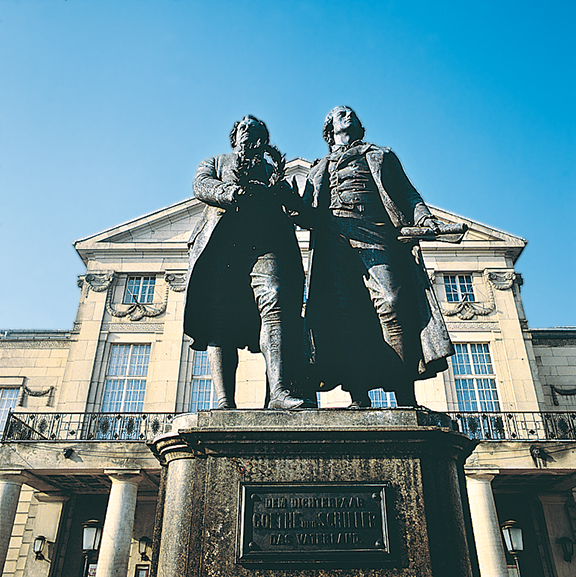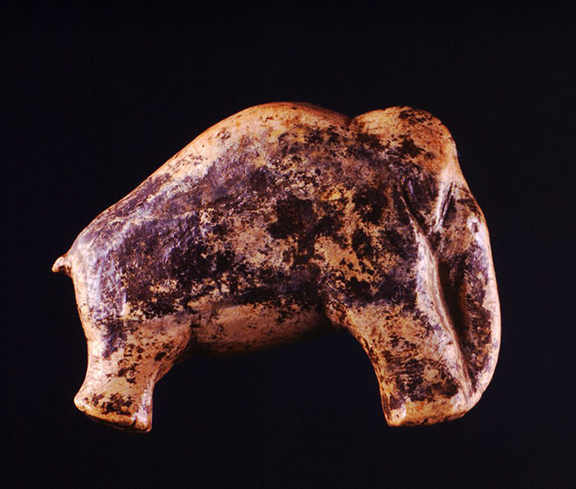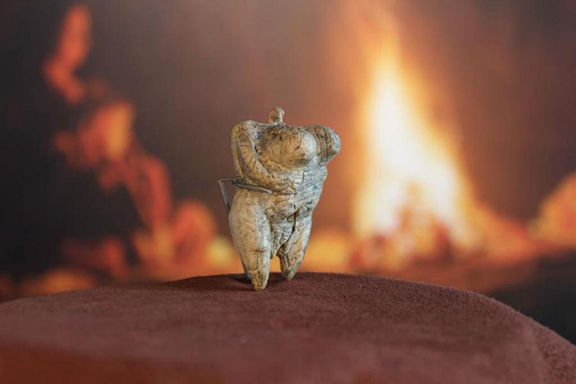New Programmes in German Youth Hostels
Four youth hostels in Germany will take you on a journey back in time with their new programmes. As if you were in a time capsule you will travel to the Stone Age, the Middle Ages or the 18th Century. All these destinations are recognised as UNESCO World Heritage Sites.
@Copyright photos: AG Weltkultursprung, Landratsamt Alb-Donauskreis
Only 6 centimetres high, very light at 33 grams and with distinctly feminine features, the mammoth ivory figure excavated in southern Germany was named “Venus”. The figure was made around 40,000 years ago and is considered the eldest representation of the human body. This summer, UNESCO added the excavation site to its list of World Heritage Sites.
Stone-Age humans were neither inept nor primitive. On the contrary, they were adept at making knives and lighting fires. They even created works of art, such as cave paintings. These are a rare treasure, as humans of this era were more concerned with finding food and making clothes.
However, the findings discovered near the southern German town of Ulm show just how creative these early artists were. Within a tiny area, archaeologists found several small figures depicting mammoths, stone age horses and cave lions, even flutes made of bird bones. It remains unclear what purpose the figures originally served, as in the case of a hybrid creature, a man with the head of a lion.
@Copyright photos: AG Weltkultursprung, Landratsamt Alb-Donauskreis
In the Prehistoric Museum Blaubeuren, visitors have the opportunity to observe the original findings and learn a great deal about life in the Stone Ages. They can even get down to work with stone tools - just like people did tens of thousands of years ago. In July 2017, UNESCO declared the archaeological site “Caves and Ice-Age Art” a World Heritage Site. The
youth hostel in Ulm is a perfect starting point for a journey to the early ages of human history. The archaeological sites and the museum are only a few kilometres away.
Customs such as Biikebrennen on the North Sea islands Amrum, Föhr and Sylt and the nearby mainland have also been recognised as cultural heritage worth protecting. Every February 21, the communities come together on the beach, start a great bonfire and light up the North Sea. You can book activities at
Wyk Youth Hostel on the island of Föhr for the traditional festivities.
@Copyright photos: Staatliche Schlösser und Gärten Hessen
Heppenheim Youth Hostel in Hessen offers medieval holidays. The youth hostel is located in the 1000-year-old castle Starkenburg. The historical building was once a refuge for monks of the Lorsch monastery (UNESCO World Heritage). The hostel’s new programme takes you on a journey back in time. Dressed in the traditional clothing of the monks, visitors learn about medieval etiquette, listen to ballads by the camp fire and are taught ancient crafts such laying mosaics, creating floor tiles or mixing herbal remedies.

The town of Weimar in Thüringen has been a UNESCO World Heritage Site for 20 years. This hub of German intellectual life was home to writers Johann Wolfgang von Goethe, Friedrich Schiller and many others. The
Maxim Gorki Youth Hostel in Weimar has recently developed a programme combining culture with environmental protection. The hostel recommends travelling by public transport and guests of the hostel have the opportunity to rent horse-drawn carriages and bicycle rickshaws. A big highlight is the “Picnic with Goethe” in front of the writer’s famous garden house.


